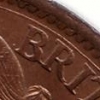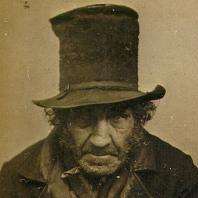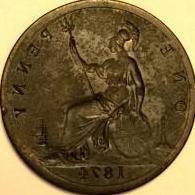-
Posts
794 -
Joined
-
Last visited
-
Days Won
56
Content Type
Profiles
Forums
Events
Downloads
Store
Gallery
Articles
Everything posted by terrysoldpennies
-
Well Matt think I've done it , i've sent a letter to Richard. I hope I haven't buggered up . Many thanks Terry
-
Hi Richard . I have been having problems viewing the small pictures on your headsntails site . So as I thought it was my computer giving the problems, I ask Matt about it and he seems to have worked out that its to do with where your pictures are stored . Anyway this all goes right over my head, but he has set up something for me with wordpress to view the pics, but they will ask you for permission , so I wondered whether that would be ok. Its a brilliant sit ,but frustrating not to have all the pictures open up. If you need an explanation as to the technical bit, I'm lost, so please as Matt . I do understand if you say no. Many thanks Terry
-

First of all, it's quite lucky that I spotted this as I didn't get any prompt via email which I usually do if anyone PM's me through the forum - if I hadn't come to check my own profile for a previous message, I may never have spotted it. Did you PM me or go a different route ?
Secondly, I'm not sure why you're having problems but it's fine to get permission. I'll grant it when it comes through. As I think about it, it may be that because I've copied and pasted some images from my collection website (englishpennies.wordpress.com) which is Private into the varieties website (headsntails14.wordpress.com), it's possible that you won't be allowed to see some images. If I'd uploaded them from scratch to headsntails14 you would be able to see them. What message do you get when you can't see a particular image ?
If I want everyone to see headsntails14 I'll have to go back and upload all the images again - a lengthy process but I'll have to do it.
-

Ah Richard . well when it starts opening all the pics of hole pennies open , but all of the small variation pic do not , there are just small little boxes with a cross in the centre, and if I click onto them a card comes up asking for a password . to contact you I bring up secret santa and post the massage . Is there a better way only I don't know it . Terry
-

-
-
Matt. I wondered if you could help me . when I go into Richards coin reference site I find that all the pictures of complete coins open up, but the smaller pictures wont . and the little box with the cross in to press, opens to a card saying I need pass words to continue . Have you any idea why they will not open , is it perhaps that there's to much information for my computer. Terry
- Show previous comments 4 more
-

Haha yes, you should pander him to do it

From what I can tell, it's just to do with how Richard has put the pictures into the site, some are clickable (which opens them up on their own page or in a new page) and some are just not.
The reason some are asking you to log in is because while the pictures are posted in the headsntails site, they are being hosted on his personal site (where the picture actually lives), which is private, and doesn't allow you to view the image until you log in and have been approved by him. Basically the link in the picture is taking you to his private site which won't show.
Hope that makes sense.
-

-

Not deliberately to block the pictures, but because he already had the pictures on his first site it is 10x easier to just copy them over instead of making new pictures.
It might be quite a big job for him to do that, it would be easier for you just to have access to the other site, which I'm sure he won't mind, but it does mean you need an account at wordpress. It's not all that easy to get one though because you need to make a site first, but to sign up is free. Happy to create an account for you if that's easier, so you can just use the log in. I'll send you a personal message if so because you'll need a password and these messages are viewable by everyone.
Matt

